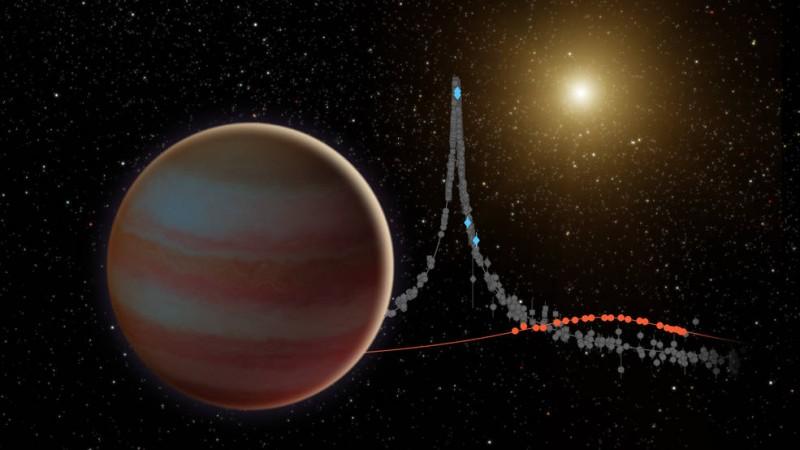
NASA's Spitzer and Swift space telescopes joined hands for the first time and have managed to discover an elusive 'brown dwarf.' This discovery was possible with the help of a phenomenon termed 'microlensing.' This technique aids researchers in spotting low-mass celestial bodies and objects.
Not all objects in space are detectable by the eyes of the astronomers. But they can be exposed with the help of magnification produced by the gravitational field of one or more objects which are located in the space between the lens of the telescope and the undetectable object, this phenomenon is termed microlensing.
Brown dwarfs weigh up to 80 times that of Jupiter and are defined as the missing link between stars and planets. These substars are found to have centres which are not thick or hot enough to produce energy by nuclear fusion like stars do.
Information accumulated with the help of ground-based microlensing surveys, which included Optical Gravitational Lensing Experiment (OGLE), was given to Spitzer and Swift post which microlensing was examined by these telescopes.
These data by the ground-based and space-based telescopes were compiled and researchers found that the lately-discovered brown dwarf weighs between 30 and 65 Jupiter masses.
According to the scientists, there are less than one percent chances of finding a brown dwarf orbiting at a distance of 3 AU around stars whose mass is roughly equal our Sun. AU stands for astronomical units, the distance between the Sun and Earth is 1 AU.
This phenomenon of brown dwarf not being able to exist as a companion object of the star it orbits around is termed "brown dwarf desert." This newly detected brown dwarf is believed to be living in this desert.
"It's possible that the desert is not as dry as we think," said Yossi Shvartzvald, a NASA postdoctoral fellow based at Jet Propulsion Laboratory in California.
"We want to understand how brown dwarfs form around stars, and why there is a gap in where they are found relative to their host stars," Shvartzvald added.
The newly discovered brown dwarf is found to orbit around a star named K dwarf, whose weight is equal to half of Sun's mass.
"In the future, we hope to have more observations of microlensing events from multiple viewing perspectives, allowing us to probe further the characteristics of brown dwarfs and planetary systems," said Geoffrey Bryden, co-author of the study.
Brown Dwarfs: Some interesting facts
- Brown dwarfs weigh up to 80 times that of Jupiter.
- The weight of the lately discovered brown dwarf lies between 30 and 65 Jupiter masses.
- These are referred to as substars, as they possess centers which are not thick or hot enough can by nuclear fusion like stars do.
- Brown dwarfs are unable to act as a companion object of the star it orbits, this is called "brown dwarf desert."
- The newly discovered brown dwarf is found to orbit around a star named 'K dwarf,' which is equal to half of Sun's mass.








![India Auto Roundup: Maruti Suzuki, Mahindra have exciting launches in November [details here]](https://data1.ibtimes.co.in/en/full/805520/india-auto-roundup-maruti-suzuki-mahindra-have-exciting-launches-november-details-here.jpg?w=220&h=138)








